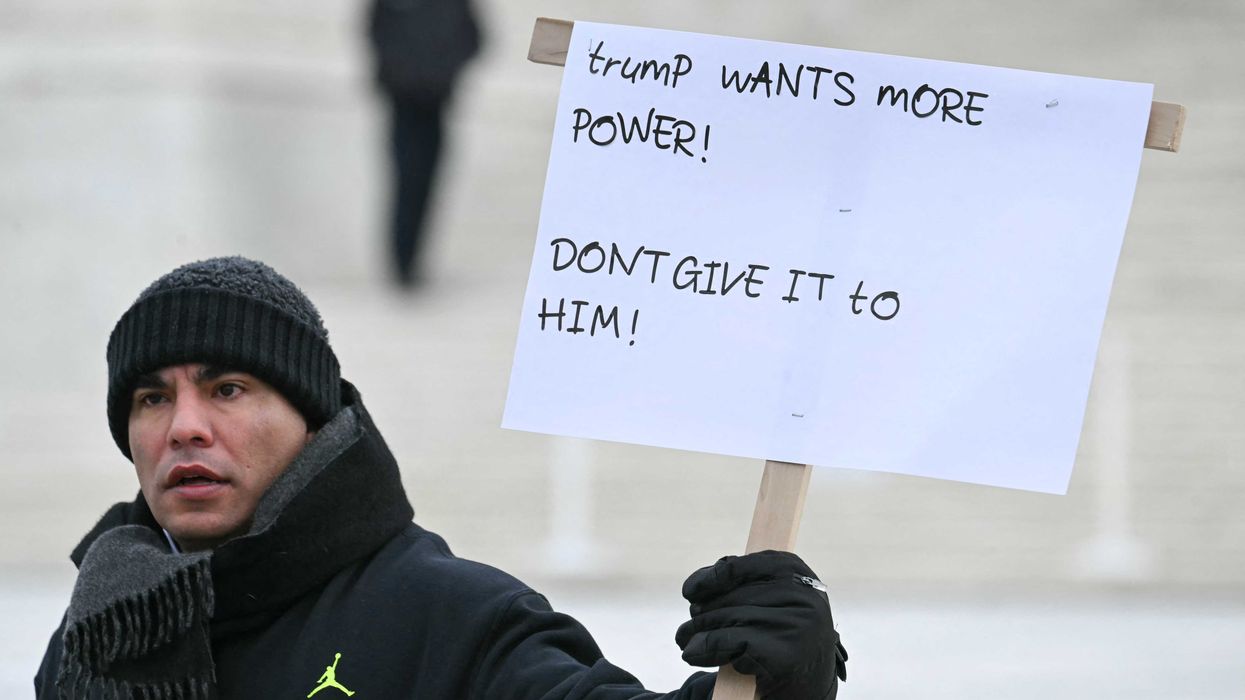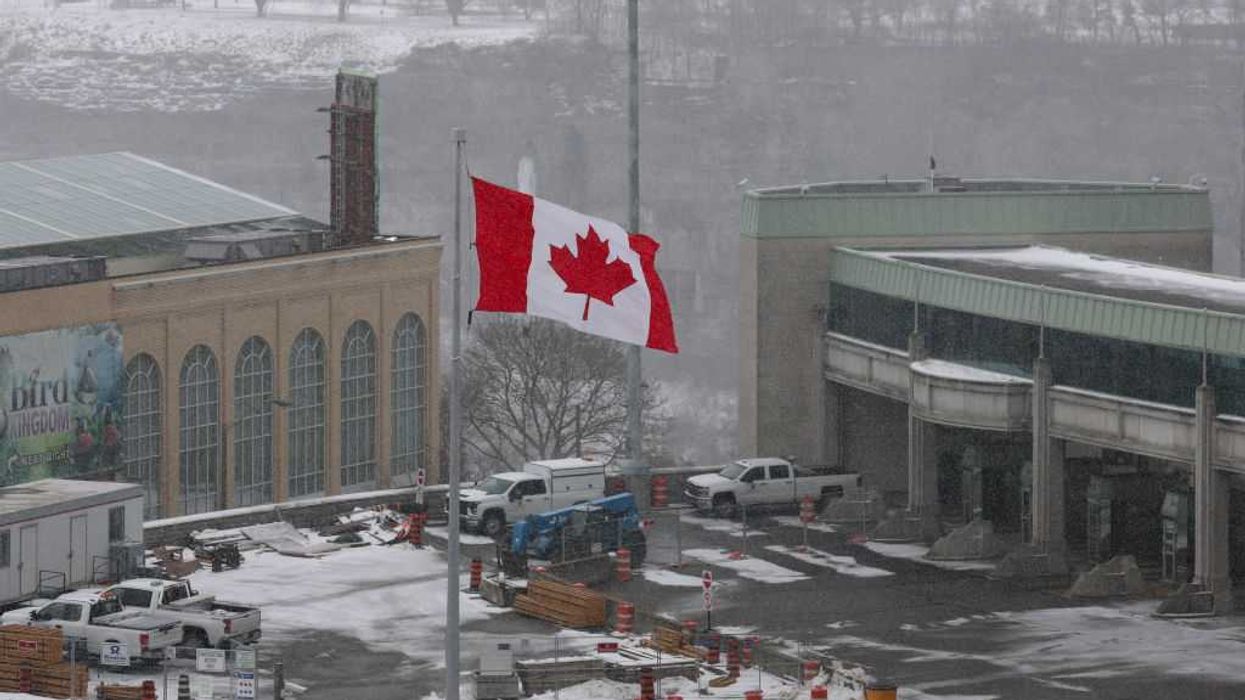Editor's Note: The following is a guest post by Chris Martenson with PeakProsperity.com.
The only real constant to be found in both European and US politics is war. A steady feature of both regions for the past 20-plus years has been small, lucrative conflicts waged against countries unable to effectively defend themselves. This time with North Korea. Why?
It doesn’t seem to matter who’s in office in the US --- Republican/Democrat, conservative/liberal --- there’s a war machine constantly running. My concern is that there's a building risk that one day that war machine is going to bust apart. And when it does, the long relative peace that the US and Europe have enjoyed (even as they’ve visited a lot of death and destruction elsewhere) will be shattered.
As I’ve written extensively in the past, as was the case with Russia last fall, this push to war includes a series of carefully-crafted talking points being endlessly repeated over the print and airwaves. It’s an ever-present condition of living in our manufactured reality, where what we are told to care about is beamed at us around the clock in a rather tediously but emotionally-manipulative way on the “news.”
For a short historical review, recall that it wasn’t that long ago that we were asked to be in a near state of panic about:
• Ebola
• Iran’s nuclear capabilities
• Libya’s terrible strongman (who turned out to be way better than the thugs who replaced him)
• Terrorists
• Russia
How many of those are now front and center in your concerns? Probably none. Today's big ‘bogeyman’ is North Korea. Have you wondered why?
The news about North Korea is at a fever pitch. Again, we have to ask, why now?
Trump says 'major, major' conflict with North Korea possible, but seeks diplomacyApr 28, 2017
The Trump administration on Wednesday declared North Korea "an urgent national security threat and top foreign policy priority." It said it was focusing on economic and diplomatic pressure, including Chinese cooperation in containing its defiant neighbor and ally, and remained open to negotiations.
U.S. President Donald Trump said on Thursday a major conflict with North Korea is possible in the standoff over its nuclear and missile programs, but he would prefer a diplomatic outcome to the dispute.
"There is a chance that we could end up having a major, major conflict with North Korea. Absolutely," Trump told Reuters in an Oval Office interview ahead of his 100th day in office on Saturday.
Nonetheless, Trump said he wanted to peacefully resolve a crisis that has bedeviled multiple U.S. presidents, a path that he and his administration are emphasizing by preparing a variety of new economic sanctions while not taking the military option off the table.
"We'd love to solve things diplomatically but it's very difficult," he said.
In other highlights of the 42-minute interview, Trump was cool to speaking again with Taiwan's president after an earlier telephone call with her angered China.
He also said he wants South Korea to pay the cost of the U.S. THAAD anti-missile defense system, which he estimated at $1 billion, and intends to renegotiate or terminate a U.S. free trade pact with South Korea because of a deep trade deficit with Seoul.
U.S. officials said military strikes remained an option but played down the prospect, though the administration has sent an aircraft carrier and a nuclear-powered submarine to the region in a show of force.
Any direct U.S. military action would run the risk of massive North Korean retaliation and huge casualties in Japan and South Korea and among U.S. forces in both countries.
Okay, let’s parse all that out:
• There are no direct negotiations between the US and North Korea
• Trump is talking tough
• Kim Jong Un is insane
• Trump wants South Korea to pay for a $1 billion US piece of hardware
• Trump wants to renegotiate or terminate the trade pact with South Korea
• If things ‘go hot’, a lot of casualties are expected
• Both China and North Korea are very alarmed by the THAAD anti-missile system the US has installed in South Korea
• The US is maneuvering military assets into the region, including an aircraft carrier and sub, among other displays of suggested force
Let’s see here…what could possibly go wrong?
How about everything?
Here’s some more on the THAAD anti-missile defense system, which wasn't well received by the locals in South Korea who, for some reason, have no interest in being dragged into a war with their immediate and heavily-militarized neighbors by a careless US administration:
US sets up missile defense in S. Korea as North shows powerApr 26, 2017
SEOUL, South Korea (AP) — In a defiant bit of timing, South Korea announced Wednesday that key parts of a contentious U.S. missile defense system had been installed a day after rival North Korea showed off its military power.
The South's trumpeting of progress on setting up the Terminal High-Altitude Area Defense system, or THAAD, comes as high-powered U.S. military assets converge on the Korean Peninsula and as a combative North Korea signals possible nuclear and missile testing.
About 8,000 police officers were mobilized, and the main road leading up to the site in the country's southeast was blocked earlier Wednesday, Yonhap reported. About 200 residents and protesters rallied against THAAD in front of a local community center, some hurling plastic water bottles.
North Korea conducted live-fire artillery drills on Tuesday, the 85th anniversary of the founding of its million-person strong Korean People's Army. On the same day, a U.S. guided-missile submarine docked in South Korea. And the USS Carl Vinson aircraft carrier is also headed toward the peninsula for a joint exercise with South Korea.
The moves to set up THAAD within this year have angered not only North Korea, but also China, the country that the Trump administration hopes to work with to rid the North of nuclear weapons. China, which has grown increasingly frustrated with its ally Pyongyang, and Russia see the system's powerful radars as a security threat.
I consider having to deploy 8,000 police officers to deter possible protestors as a strong sign of just how unpopular a move it is for the THAAD system to be installed. North Korea is rattling its sabers, the US is moving assets in, China is both alarmed and trying to be helpful at the same time, probably preferring to let a sleeping dog lie.
This is an incredibly volatile moment, especially considering that Kim Jong Un has been anything but rational his entire life. So, again, we have to ask: Why now? Why has beating North Korea into submission become such a sudden national priority?
Before address that, it bears repeating that most of what passes for “news” in the West is actually well-crafted talking points put out by self-interested people who have discovered a fantastic way to remain in power and accumulate wealth. Read more about this in our prior report: We Are Being Played.
Well, that's true at least as long as we consent to follow along and dutifully remain ignorant of these tricks of persuasion by propaganda. There’s really no good excuse for being fooled, except mental laziness. The tricks of this trade are neither subtle nor difficult to spot.
Meanwhile, the actual things that are deteriorating alarmingly are not even talked about -- ever -- in the main news outfits. Alarming species extinction rates, the loss of phytoplankton in the oceans, the loss of terrestrial soil fertility into oceanic dead zones, and the largest wealth gap in all of history created on purpose by central banks -- very real crises like this are nearly completely ignored.
These are all very dangerous to our future, but they aren't talked about because doing so won't sell more weapons. Nor will it advance any political careers, or goose banking profits next quarter.
So for a system that demands continuous conflict in order to function, to manufacture a new war you need a good sales agent, and none are so closely tied to that racket than the New York Times. Here they are recently using the same dumb tricks that worked the last time, and the time before that…and so on:
NYT’s ‘Impossible to Verify’ North Korea Nuke Claim Spreads Unchecked by MediaApr 26, 2017
Buoyed by a total of 18 speculative verb forms—five “mays,” eight “woulds” and five “coulds”—New York Times reporters David E. Sanger and William J. Broad (4/24/17) painted a dire picture of a Trump administration forced to react to the growing and impending doom of North Korea nuclear weapons.
“As North Korea Speeds Its Nuclear Program, US Fears Time Will Run Out” opens by breathlessly establishing the stakes and the limited time for the US to “deal with” the North Korean nuclear “crisis”:
Behind the Trump administration’s sudden urgency in dealing with the North Korean nuclear crisis lies a stark calculus: A growing body of expert studies and classified intelligence reports that conclude the country is capable of producing a nuclear bomb every six or seven weeks.
That acceleration in pace—impossible to verify until experts get beyond the limited access to North Korean facilities that ended years ago—explains why President Trump and his aides fear they are running out of time.
The front-page summary was even more harrowing, with the editors asserting there’s “dwindling time” for “US action” to stop North Korea from assembling hundreds of nukes:
From the beginning, the Times frames any potential bombing by Trump as the product of a “stark calculus” coldly and objectively arrived at by a “growing body of expert[s].” The idea that elements within the US intelligence community may actually desire a war—or at least limited airstrikes—and thus may have an interest in presenting conflict as inevitable, is never addressed, much less accounted for.
The most spectacular claim—that North Korea is, at present, “capable of producing a nuclear bomb every six or seven weeks”—is backed up entirely by an anonymous blob of “expert studies and classified intelligence reports.” To add another red flag, Sanger and Broad qualify it in the very next sentence as a figure that is “impossible to verify.” Which is another way of saying it’s an unverified claim.
Unverifiable “evidence,” anonymous sources, and the broad appeal of “many experts.” Sound familiar? It should, it’s the exact same playbook used by the war machine to bomb and invade Iraq, Afghanistan, Syria, and, someday soon, Iran and Russia.
It brings to mind this quote by Arundhati Roy:

What I'm saying is that it’s the exact same trick used over and over again. Either the New York Times is the stupidest crew of reporters and editors ever with completely flat learning curves, or they are in on the racket. More likely the latter than the former, I'm convinced. The New York Times hasn't seen a war it couldn’t support (especially in the oil-rich Middle East).
Why Now?
So the big question is ‘why now?’ Why is North Korea suddenly such a concern? They’ve been peskily doing what they do for a very long time; developing crude nuclear devices and lobbing test missiles into the sea.
If you happen to be the ocean around North Korea, you have to absorb a wayward rocket now and then. But there’s not much of a threat beyond that at the moment.
None of the articles I’ve read have given any credible insight into why North Korea is considered a clear and present danger to US interests at the moment. More than that, no analysis has been proffered to explain how any potential military action doesn’t just end in a bloodbath for the poor people of South and North Korea.
The conventional military capabilities of North Korea are pretty staggering if you live in Seoul South Korea, at least:
When it comes to soldiers based on the North Korean border, the US only has about 20,000 troops permanently stationed in South Korea, as well as about 8000 air force personnel and other special forces. There were also about 50,000 military personnel based in Japan.Compare this to North Korea, which has 700,000 active soldiers, but a whopping 4.5 million reserves.
Prof Blaxland said North Korea had also massed about 20,000 rockets and missiles on the border with South Korea, and when you are playing a numbers game, technology doesn’t always win.
“There’s a saying ‘quantity has a quality all of its own’,” he said.
“North Korea has massed artillery and missile capability adjacent to the demilitarised zone, close to Seoul, which puts it in range of a population about the size of Australia — it’s pretty scary.”
As a reminder, Trump campaigned on a peace platform. So this sudden belligerence has to be coming form some heavy internal pressure; or he’s simply flip-flopped (or wasn’t honest) on a very important matter.
He’s done so much flip-flopping that this tweet struck me as funny:

Continuing with the mystery of Why now?, we note that the potential consequences of a kinectic conflict for South Korea are staggering. The simple fact is that, no matter how many jets and cruise missiles a carrier group launches, or what countermeasures South Korea and embedded US military bring to bear, there’s little chance of them wiping out anything but a very small percentage of North Korea’s conventional artillery and rocket capabilities.
Think of 500,000 rounds of artillery landing in a major, packed capitol city that has the population of Australia and you can begin to appreciate the scale of the catastrophe that could ensue:
Trump, who clearly and unequivocally campaigned on a peace platform, is now sending a “very powerful armada” to the coast of the DPRK. Powerful as this armada might be, it can do absolutely nothing to prevent the DPRK artillery from smashing Seoul into smithereens. You think that I am exaggerating? Business Insider estimated in 2010 that it would take the DPRK 2 hours to completely obliterate Seoul. Why? Because the DPRK has enough artillery pieces to fire 500,000 rounds of artillery on Seoul in the first hour of a conflict, that’s why. Here we are talking about old fashioned, conventional, artillery pieces. Wikipedia says that the DPRK has 8,600 artillery pieces and 4,800 multiple rocket launcher systems. Two days ago a Russian expert said that the real figure was just under 20,000 artillery pieces. Whatever the exact figure, suffice to say that it is “a lot”.The DPRK also has some more modern but equally dangerous capabilities. Of special importance here are the roughly 200’000 North Korean special forces. Oh sure, these 200,000 are not US Green Beret or Russian Spetsnaz, but they are adequate for their task: to operate deep behind enemy lies and create chaos and destroy key objectives. You tell me – what can the USS Carl Vinson carrier strike group deploy against these well hidden and dispersed 10’000+ artillery pieces and 200,000 special forces? Exactly, nothing at all.
Clearly that’s a very unsettling prospect for South Korea. Just imagine a favorite major city of yours with a completely unstable leader within artillery range just to its immediate north. It’s a frightening prospect.
Again, I cannot find a single credible reason for Why now?. And so, we have to simply speculate.
Possible reasons range from an itchy military industrial complex that is disappointed that it cannot seem to goad the US into war with Russia and North Korea just happened to be next on the list, to the idea that Trump is really seeking trade deal concessions from South Korea and is using the North Korean situation as leverage.
The latter is not out of the realm of the possible, with Trump having said he wants South Korea to pay for the THAAD system being installed and that he wants to renegotiate our balance of trade with them, too.
Who says stuff like that at a time when war might break out? Someone who doesn’t really appreciate the gravity of the situation, I'd suggest. I mean, if it’s a negotiating tactic, it’s one that could end up with a lot of people losing their lives and a ruined economy. If it’s a negotiating tactic stapled to a crisis, it’s still an odd thing.
Conclusion
Tensions with North Korea are about as tight as can be right now. And the wild card is the apparent instability of Kin Jong Un. Who knows what he might do?
Any equally-perplexing mystery, which for now I'll have to file under “central banks control the markets” is why the KOSPI (South Korea's stock index) is up so much on the outbreak of these very serious tensions?

Central banks are propping it up here to keep the masses calm, or the central banks are to blame for pouring so much liquidity into world markets that even the risk of obliteration is insufficient cause for a stock market to go down. So take your pick: either it’s a controlled market or it’s a sign of just how outrageous the bubble mentality across the world has become.
One feature of bubbles is the inability to entertain the idea of an asset ever going down in price. So they go up; news and data be damned.
I just find it extremely strange that the South Korean stock index is powering higher through all of these tensions. It's very, very strange. Stocks are not supposed to like uncertainty. The post-French election stock buying spree was explained on that very basis: the French elections removed uncertainty and therefore stocks went up.
But now we're being forced to accept how stocks are going up as uncertainty increases.
Since it really makes no sense, other ‘reasons’ are being given. But it’s just too strange for the rational mind to believe them. It’s just not normal; and therefore we don’t live in a normal world anymore.
If a full shooting war breaks out with North Korea, there will be massive casualties on all sides. To think that peace depends on Trump negotiating with Kim Jong Un is a particularly comic-book-worthy plot line. It seems absurd. But here we are.
If you live in Seoul, you should consider getting out for a while. Take a vacation, or work remotely, and bring your family. Just for a while -- maybe a couple of weeks.
If you can’t do that, then be sure all of your loved ones know the rally points and basement shelters that apply. Review your basic contingency plans and then hope that they won't be required.
Remember, any outbreak of war is going to be a very bad thing for the globe at this particular moment in history. Debt levels are stretched to the limit, GDP is weak, and it won’t take much to upset the economic and financial market apple carts.
For everyone else, read our report How To Prepare For War that was prepared for the possibility of a war with Russia.
It’s not a pleasant topic, nor one I like to keep raising. But there’s a crew in charge in DC that is intent on starting wars, and they are not about to stop now. I believe they span administrations and they are very influential.
I also happen to believe that they will eventually pick a fight we all regret very much.
So be prepared.


 JIM WATSON / Contributor | Getty Images
JIM WATSON / Contributor | Getty Images
 Joe Raedle / Staff | Getty Images
Joe Raedle / Staff | Getty Images AASHISH KIPHAYET / Contributor | Getty Images
AASHISH KIPHAYET / Contributor | Getty Images Harold M. Lambert / Contributor | Getty Images
Harold M. Lambert / Contributor | Getty Images